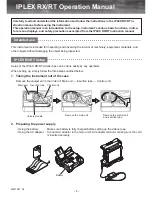
State Histogram mode
State Histogram mode displays relative activity of ranges of a specified label.
The ranges can also be compared to activity on the rest of the label not
defined in the ranges. Data qualification is possible with State Histogram, so
data can be filtered during acquisition.
Data sampling and sorting
When Run is pressed, all input channels
defined in the Format Specification are sampled. Once acquired, each
sample in the acquisition is compared to each defined range. If the
sample value is inclusively within the range and if the range is on, the
count for that range is incremented, then the State Histogram display is
updated. The acquisition is repeated until Stop is pressed or until a
display variable is changed.
The histogram is displayed on a percentage scale, and each bar represents
the fraction of all samples in that range. For example, if a bar reaches the
40% value on the display, then the range for that bar contains 40% of all the
samples displayed. If the total of all bars equals greater than 100%, then
ranges have been overlapped and data has been counted twice.
State Histogram vs. State Overview
State Histogram is similar to
State Overview, but there are key differences between the two modes.
State Overview shows relative distribution of activity over a single
contiguous range of a label. State Histogram also allows several
non-contiguous ranges of a label to be defined.
State Overview requires minimal setup, and provides a quick overview of
system activity. State Histogram requires more setup, but provides greater
resolution and measurement flexibility.
State Overview mode does not display data that falls out of the range of its
Low and High values. State Histogram, on the other hand, has an "Other
States included/excluded" feature that will present a histogram of any activity
that does not fall into the defined ranges (see "Other States Included/
Excluded," later in this section).
State Overview samples and displays all activity on the specified label. But
State Histogram allows data qualification so that only activity of interest is
sampled and displayed (see "Trace Type: All States vs. Qualified States," later
in this section).
Range specifiers
Up to 11 ranges are available. The ranges are defined
by specifying a low and high value on the specified label and by a name
you define. The ranges need not be contiguous. If two ranges overlap in
any manner, acquired data will be counted in both ranges.
System Performance Analysis (SPA) Software
SPA measurement processes
8-12
Содержание 1660CS
Страница 5: ...Introduction iv ...
Страница 16: ...1 Logic Analyzer Overview ...
Страница 24: ...2 Connecting Peripherals ...
Страница 33: ...2 10 ...
Страница 34: ...3 Using the Logic Analyzer ...
Страница 55: ...3 22 ...
Страница 56: ...4 Using the Trigger Menu ...
Страница 75: ...4 20 ...
Страница 76: ...5 Triggering Examples ...
Страница 109: ...5 34 ...
Страница 110: ...6 File Management ...
Страница 114: ...Saving the system configuration for programmatic control File Management To save a configuration 6 5 ...
Страница 119: ...6 10 ...
Страница 120: ...7 Reference ...
Страница 221: ...7 102 ...
Страница 222: ...8 System Performance Analysis SPA Software ...
Страница 241: ...SPA Time Interval System Performance Analysis SPA Software SPA measurement processes 8 20 ...
Страница 252: ...9 Concepts ...
Страница 273: ...HP 1660CS series analyzer theory HP 1660C CS logic analyzer The Analyzer Hardware HP 1660CS series analyzer theory 9 22 ...
Страница 279: ...Oscilloscope board theory Oscilloscope board The Analyzer Hardware Oscilloscope board theory 9 28 ...
Страница 284: ...10 Troubleshooting ...
Страница 298: ...11 Specifications ...
Страница 311: ...11 14 ...
Страница 312: ...12 Operator s Service ...
Страница 324: ...Troubleshooting Flowchart 2 Troubleshooting To use the flowcharts 12 13 ...
Страница 337: ...Glossary 4 ...
















































